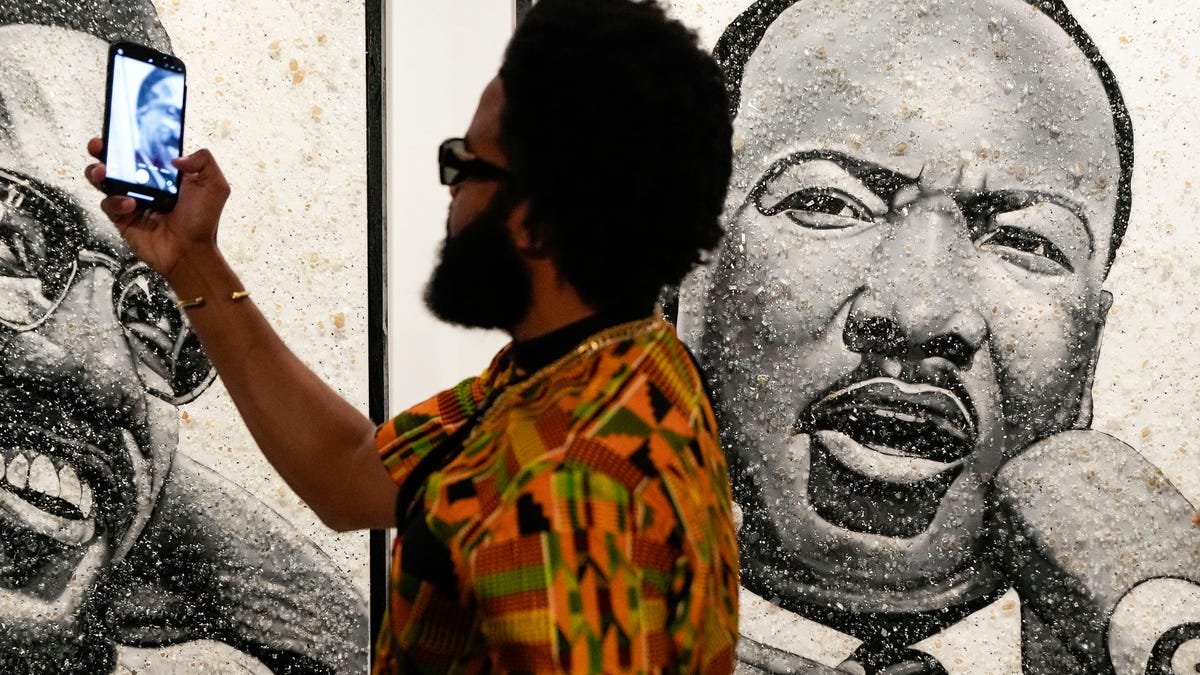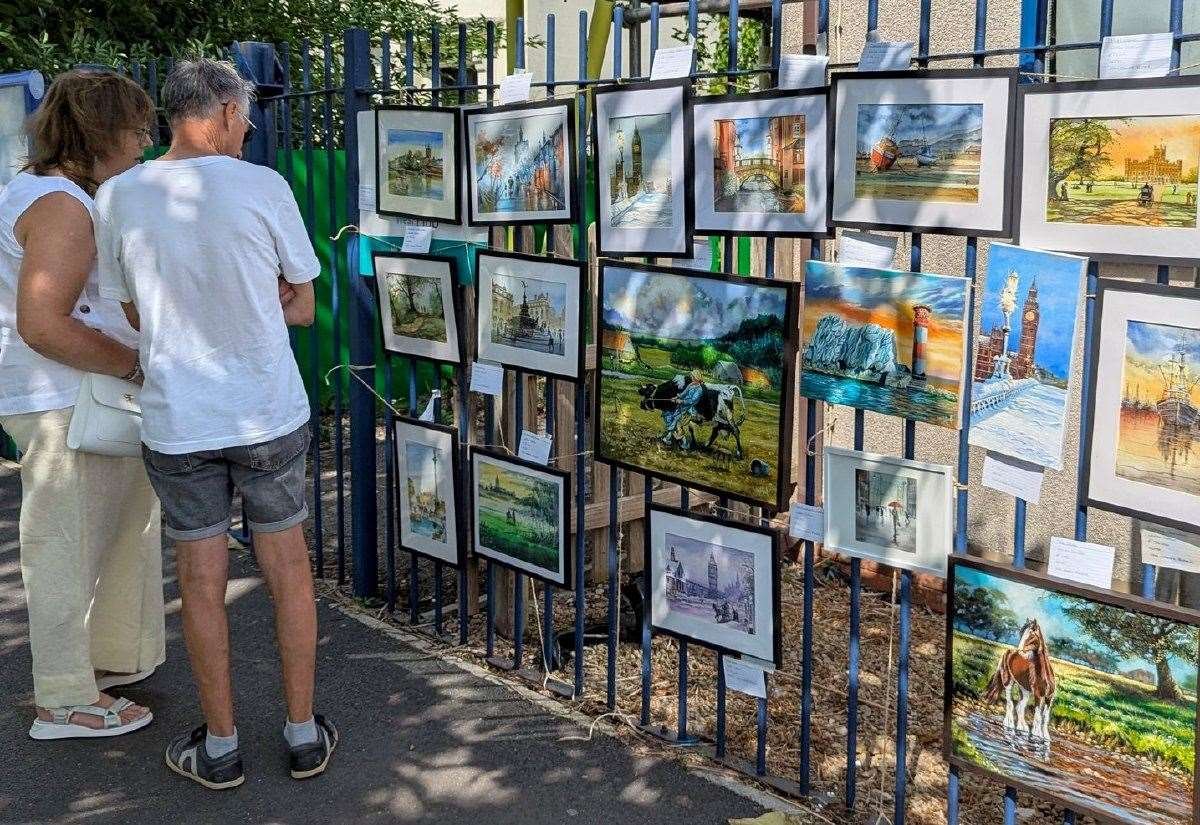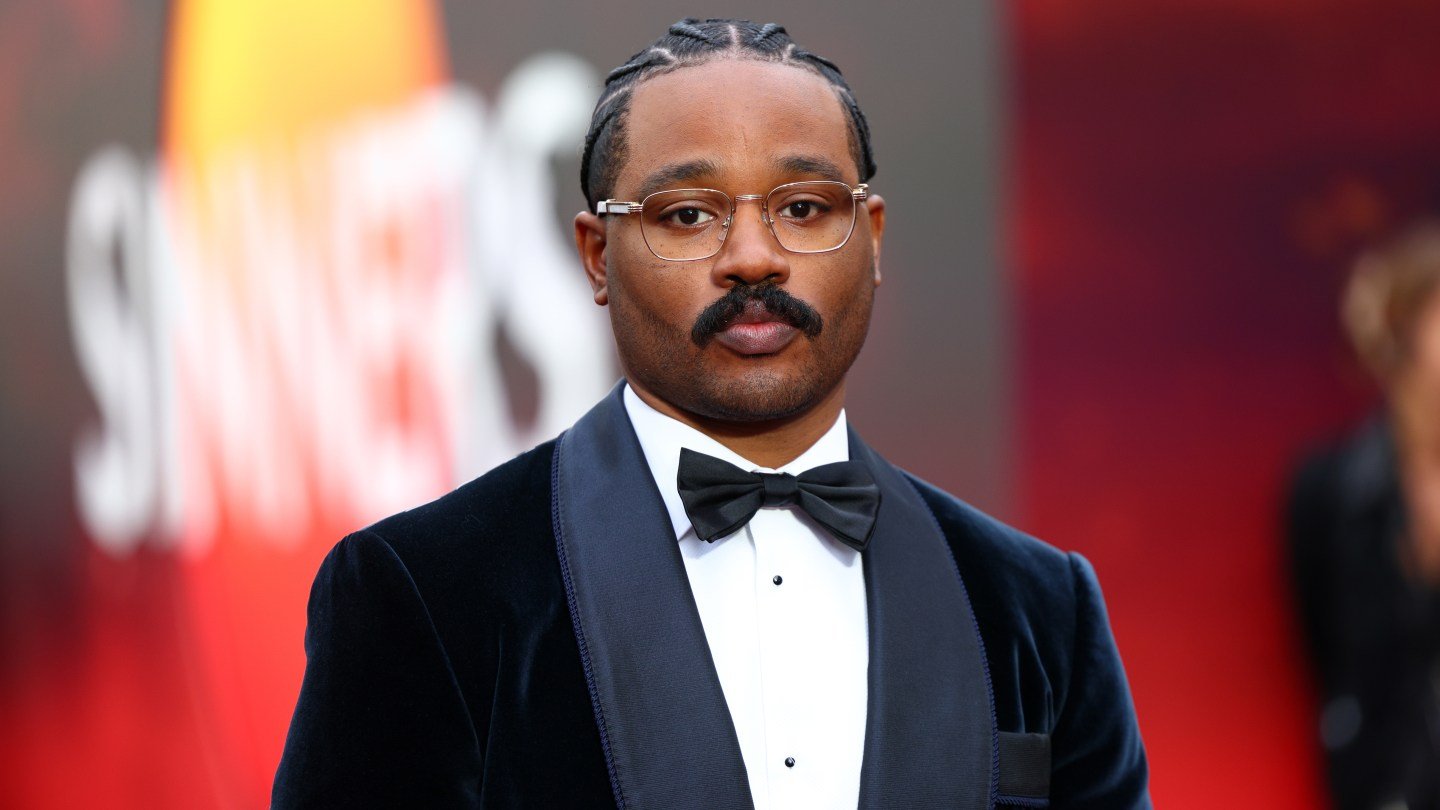When Los Angeles–based artist Kira Maria Shewfelt began painting kisses, she encountered a problem: On canvas, these passionate images appeared violent. The figures seemed to suffocate each other. The artist reconfigured her renderings so they’d work in the symbolic, romantic register she sought. In one of her oil paintings, Lohengrin Supernova (2023–24), the figures’ lips barely brush. Yet their blushing cheeks and Shewfelt’s decorative confetti flourishes suggest tenderness and love.
These values bear out across the 14 canvases at Make Room in Los Angeles, where Shewfelt’s debut solo exhibition with the gallery, titled “The Yearlings,” is on view from April 20th through May 25th. The artist varies her scale and subject matter: A 55-by-83-inch diptych, The Sanctuary (2023–24), depicts horses and a lithe rider amid a flowered grove, while a smaller canvas, Kitchen Cat Draw (2023), features a mother and child who sit and paint at the edge of a sunlit kitchen. Pairs of lovers appear across the show, their stories simultaneously allegorical and specific. For the artist, the more “epic” or “fantasy-based” scenes are no different from the domestic scenes. “The show is really about the transformative quality of touch,” Shewfelt said, “about this moment of connection.”
These interests are a significant departure from Shewfelt’s early ambitions. After graduating from Yale in 2006 with a degree in comparative literature, the artist moved to Egypt. As war raged in Afghanistan and Iraq, she wanted to write about the region’s politics. But she felt detached from the work, unsure how much she really had to say. An MFA program at NYU allowed her to take a more research-oriented approach to her medium, and she began writing about art. Painting’s physicality ultimately drew her in: the immersive quality of working large-scale, or the intimacy of drawing one’s bed.
Language and semiotics—considerations of words or symbols and their webs of meaning—nevertheless remain integral to Shewfelt’s conception of painting. The artist applies a light wash to her canvases, then covers her grounds with energetic patterns: the stripes of bedclothes, for example, or nearly pointillist conceptions of flowers, crowds, and trees. Her resulting images of kisses, enclosures, and open fields suggest larger notions of attachment and distance, freedom and restraint.
She notes how often painters say their work “needs” something, how that felt desire guides their next move. “You’re conjuring an image that needs attention and care,” Shewfelt said. “You’re making something that stands outside of you, and you’re in dialogue with its needs and your own capacity to meet them.”
It’s a description one might apply to parenthood, and Shewfelt readily mentions the changes in her personal life that inspired her show, since the past few years have seen the artist getting married and giving birth to her daughter. The exhibition’s title, “The Yearlings,” connects the horses that often appear as Shewfelt’s subject matter with her own young family and burgeoning practice.
Shewfelt’s vibrant palettes, energetic markmaking, and floral motifs connect her work to that of Pierre Bonnard or Les Nabis, whose sunny fin-de-siècle paintings embraced decoration and beauty through tranquility. If Shewfelt’s canvases appear similarly idyllic, the artist hopes her work “isn’t free of trouble,” and that it can contain the conflicts that inevitably result within love and the domestic sphere. Still, she said, she would like her paintings to function as a kind of wish, prayer, or offering—that her efforts to find beauty have the potential to heal. “These are small gestures,” she said, “but they’re meaningful.”






